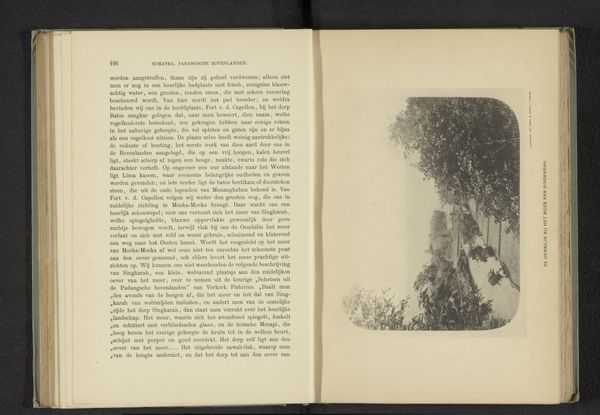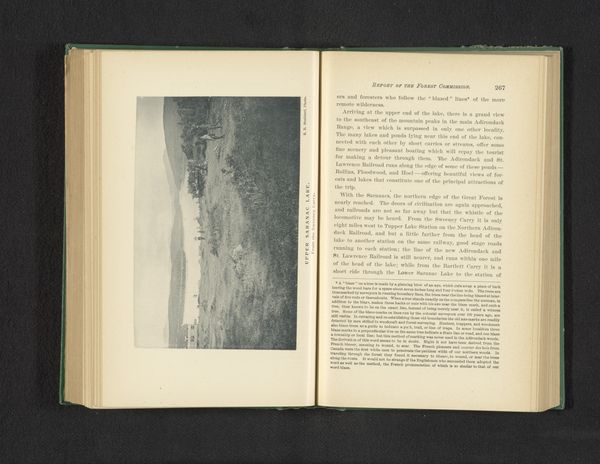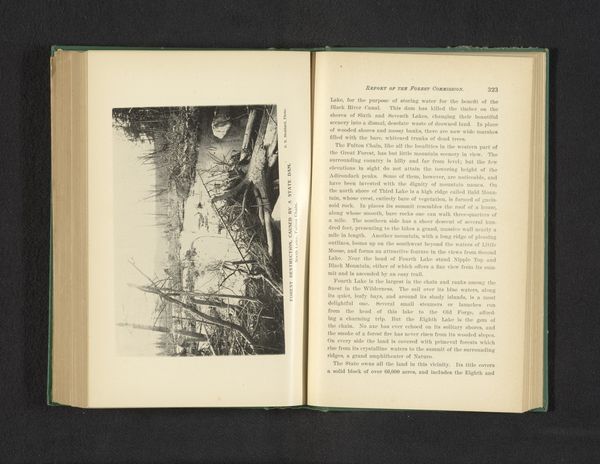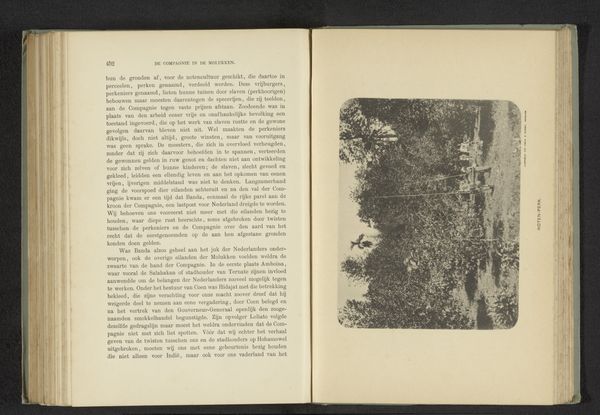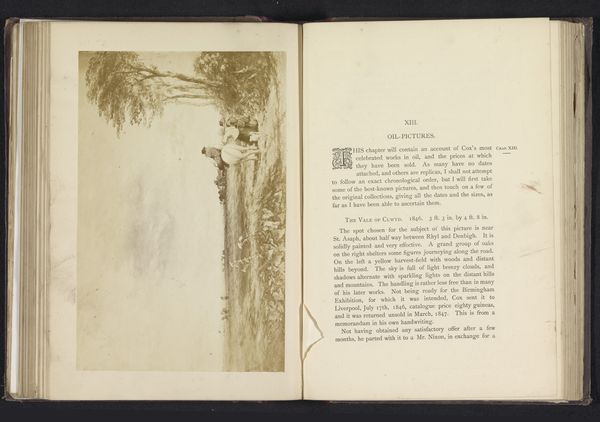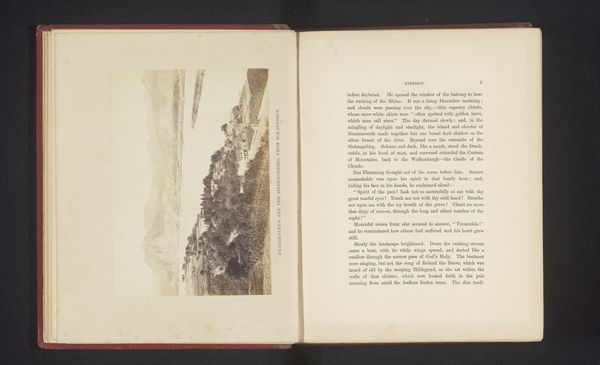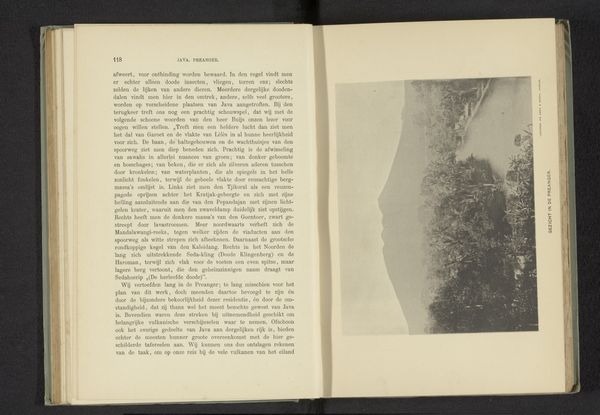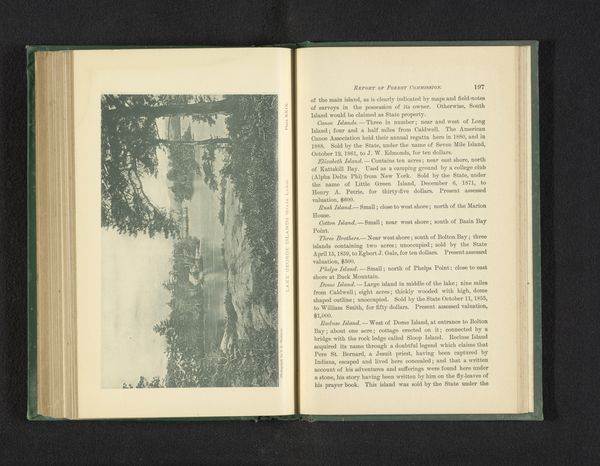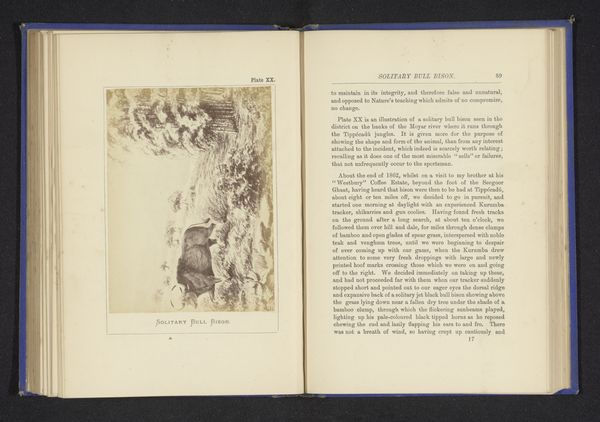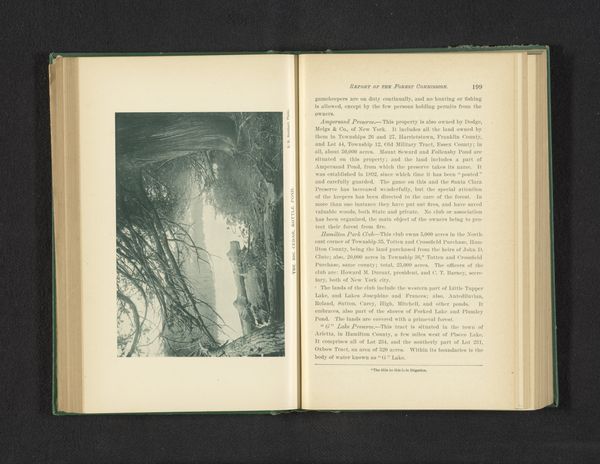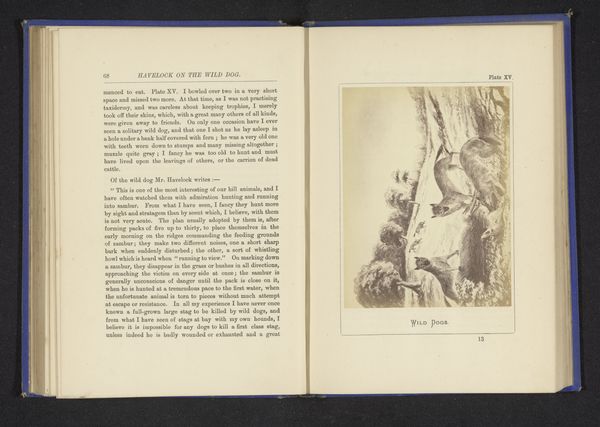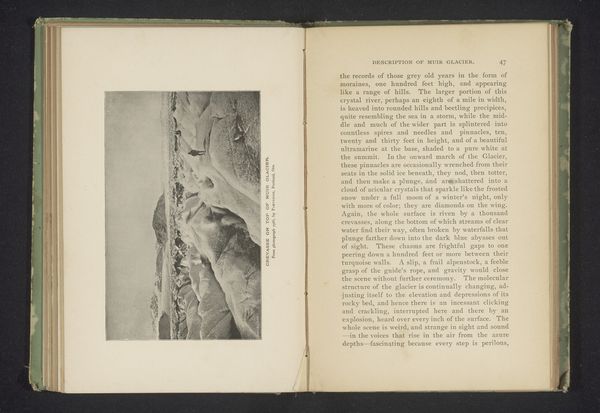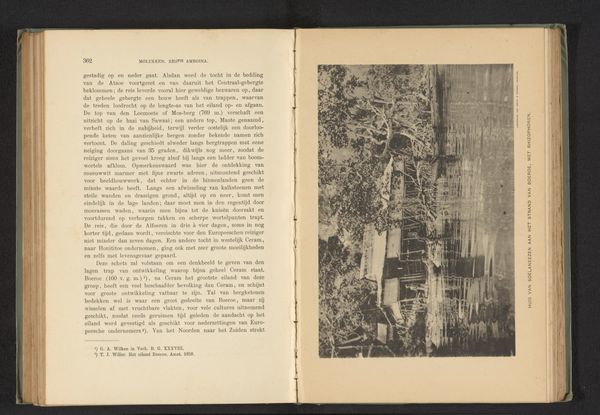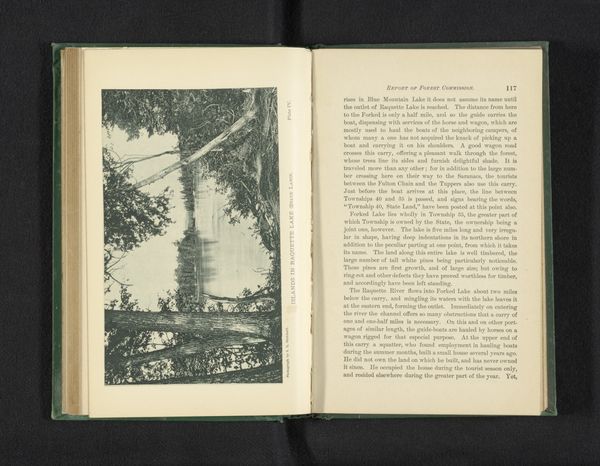
painting, print, wood
#
painting
# print
#
book
#
landscape
#
wood
#
realism
#
building
Dimensions: height 111 mm, width 165 mm
Copyright: Rijks Museum: Open Domain
Curator: Here we have an illustration simply titled "Farringford," dating to before 1897. It appears to be a reproduction within a book, possibly a wood engraving of a watercolor. What are your initial impressions? Editor: My eye immediately goes to the stark contrast—the blacks are really solid. The book is physically present in a way, the tactile reality of the printed image pushing against the illusion of depth within the landscape. Curator: Yes, let's consider the social context. “Farringford” depicts the Isle of Wight home of Alfred, Lord Tennyson, the Victorian Poet Laureate. These illustrations served to promote his work and life, making his home accessible to a wider public. They're part of crafting and curating Tennyson's image. Editor: I’m more interested in the means by which that image was spread. That wood engraving speaks to a whole industry—the craftspeople who reproduced these images for mass consumption. How were the blocks prepared? What was the labor like? Did those engravers see themselves as artists, or as technicians serving Tennyson’s celebrity? Curator: An interesting point. This print offered readers access, albeit mediated, to a prominent cultural figure's environment, and created aspiration for a middle class consuming culture and seeking prestige by buying this book. Editor: Access…to a carefully constructed view of domesticity and creative life. This wasn't just about experiencing Tennyson; it was about buying into a lifestyle. The materiality is key—paper, ink, the very weight of the book in your hands reinforces this sense of possession. We shouldn’t ignore that someone worked, labored over producing this piece for others consumption. Curator: Precisely. And it’s interesting how that labor reinforces notions of class and cultural capital within the art world and literary circles of the time. This book isn’t just presenting a scene; it's reinforcing a system of values. Editor: Yes, thinking about how materials shaped meaning challenges the romantic view of artistic creation—Tennyson’s verse becomes interwoven with the hands that produced this print. A landscape infused with class and material reality, it makes us think beyond aesthetics. Curator: Indeed, it adds another dimension to our appreciation.
Comments
No comments
Be the first to comment and join the conversation on the ultimate creative platform.
